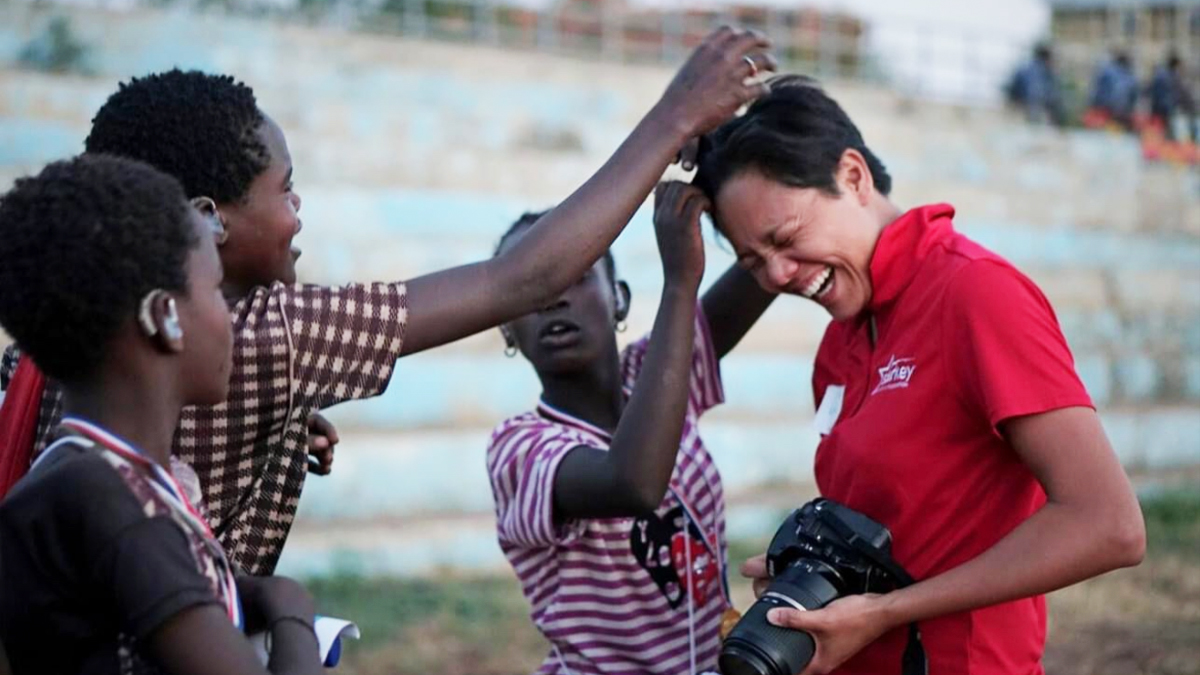
A talent for tennis funded Larissa’s education as an international student.
When Larissa Baiocchi was a teenager, tennis was her “whole life” and she didn’t really think about going to university – or doing a degree in journalism. The former UNSW External Communications Manager will return from parental leave later this year to take up her new role as Head of Communications.
At the age of just two, Larissa would stand on a table to play table tennis with her family. At four, she received a gift of her first (wooden) tennis racquet from her grandparents and took her first lesson at seven.
“As a young child, my goal was to be a professional tennis player. As a junior, I played around Australia, in Europe, Asia, Australasia and the Americas. But at the age of 17, I suffered a shoulder injury that was not exactly career-ending, but career-limiting. I had to have shoulder surgery, and then took about 18 months off, not playing tennis at all,” Larissa said.
“When I finished high school, I looked for options to play highly competitive tennis that wasn't on the pro circuit – and I learned about the college system in America.”
Larissa earned a division one scholarship and played tennis at Western Michigan University, where she received a BA and was inducted into her alma mater’s Athletic Hall of Fame. She is one of the most decorated players in Bronco (Western Michigan University) tennis history.
She chose her major in broadcast and print journalism because in high school her English teacher had suggested she think about journalism. Her undergraduate degree led to a radio internship in Kalamazoo, Michigan, which “didn't feel like the right fit”. Her second internship at a newspaper just outside of Chicago, led to a permanent role, where she stayed for eight years.
“That was really the start of my journalism career and probably the highlight of my tennis career. It was a huge turning point in my life. I’d never imagined living in another country for four years for college, let alone 20,” she said.
“Then, as a tennis coach for another college team in Indiana, I was able to do my master's degree. Tennis funded my education as an international student in America, so it’s afforded me opportunities that I wouldn’t have had otherwise.”
After college tennis and journalism?
Larissa’s first role outside print journalism was in public affairs and PR for Minneapolis Public Schools – the largest school district in the state of Minnesota – telling stories about the school district, students and educators. From there she moved to the School of Journalism at the University of Minnesota as Communications Manager, where she “got a taste of working in a university”.
Then a new role at the not-for-profit Starkey Hearing Foundation caught her eye, encompassing travel, photography and storytelling.
“It was the first time anyone had ever had the role, which was nice because I got to make it my own. I was still based in the US and travelled all over Africa, Southeast Asia, South America – I went to six of the seven continents,” Larissa said.
It was on one of those trips – to Cambodia – that Larissa met her future partner Megan, an audiologist (at the time) working on a Starkey hearing health program.
What might surprise your colleagues about you?
I’m a huge fan of karaoke and my favourite song to sing is ‘I want it that way’ by the Backstreet Boys.
What’s the best advice you ever received?
You miss 100 per cent of the shots you don’t take.
What makes you happy?
My two children – just laughing at what the three-year-old says and watching the baby follow his hands and fingers as if they’re magical.
What day would you like to relive?
My 21st birthday was the best. My tennis team won the conference championships and my parents, brother and grandparents were there to watch me play for the first time in years.
What’s the best thing you’ve read in the last year?
I didn’t think I would get through the 700+ pages of The Covenant of Water but the story was utterly captivating and beautifully written. I’m hoping to see Abraham Verghese at the SWF.
Know someone with a good story? Email us at: insideunsw@unsw.edu.au
- Log in to post comments
